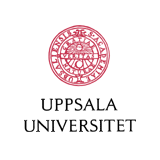|
Integration of Spatial Processing in the WINNER B3G
Air Interface Design.
Martin Döttling
, Siemens AG,
Mikael Sternad
, Uppsala University,
Göran Klang
, Ericsson AB,
Jörn von Häfen
, Siemens AG, and
Magnus Olsson
, Ericsson AB.
IEEE 63d Vehicular Technology Conference, VTC2006-Spring
, Melbourne, Australia, May 2006.
© IEEE
-
Outline:
-
The European research project WINNER is a cooperation of 38
partners from industry, operators, and academia which is partly
funded by the European Union, with the overall goal to develop
a single radio interface covering the full range from isolated
hot spots to wide area cellular scenarios by using different modes
of a common technology. It targets increased data rates,
low latency, and high system capacity based on adaptive
transmission schemes, flexible spectrum usage, relaying,
and advanced multi-antenna processing.
Spatial processing is a key enabler to meet these targets,
since it provides an additional dimension of multiplexing,
multiple access, and link adaptation. It also allows
implementing enhanced (multi-user) interference
management techniques. Depending on the specific
needs of the data flows, robustness, coverage, or data rate
can be increased and high overall spectral efficiency can
be achieved.
Due to the manifold usage scenarios to be
accommodated, the WINNER multi-antenna architecture
must be able to foster gains due to spatial diversity,
spatial multiplexing, SDMA, beamforming, and spatial
interference management in flexible combinations and
with scalable amount of channel knowledge at the transmitter.
We distinguish open-loop techniques, where no channel
knowledge is available at the transmitter, from cases
where we have a channel quality indicator (CQI, e.g.,
knowledge of SINR) or more complete channel state
information (CSI, e.g. channel covariance matrix), either
as long-term or short-term information
Such a scalable and adaptive concept is achieved by a multi-user
spatial domain link adaptation concept, based on (linear)
dispersion codes, beamforming, multi-user precoding,
and per stream rate control (PSRC).
The actual
configuration and parameterization of the spatial processing
is part of the MAC service radio resource control,
which splits the available resources across cells and
transport channels, and performs fast resource scheduling.
The multiple functionalities of this service are interconnected
and a joint optimization is not tractable.
Even an iterative solution would compromise the quest
for low latency. Therefore this paper outlines a baseline
non-iterative procedure and split into functionalities
that allows a flexible and channel-dependent resource
assignment including spatial processing.
-
Abstract:
-
Numerous investigations of spatial processing algorithms
are available in literature showing the benefit of MIMO
systems in particular situations. From a system perspective,
however, spatial processing has to provide adaptivity and
scalability to a wide range of scenarios and has also to be seen
in the context of its impact on other system services and functions,
its enabling requirements, overhead, and robustness.
This paper summarizes recent work towards integrated
spatial processing services and functions for an OFDM-based
B3G air interface, developed in the European
IST research project WINNER.
The current status of the air interface and the multi-user
spatial domain link adaptation concept is summarized.
A baseline spatial scheme selection process is developed
as part of the overall MAC radio resource control.
-
Related publications:
-
Proc. of the IEEE (Dec. 2007)
invited paper on
adaptive transmission in beyond-3G wireless systems.
-
IST Mobile Summit 2006 paper
presenting the WINNER MAC for cellular transmission.
-
Later WINNER II design (ICT Mobile Summit 2008).
-
Source:
-
Pdf, (681K)
|
The Wireless IP Project Homepage
|
Main
entry in list of publications
|
This material is posted here with permission of the IEEE.
Such permission of the IEEE does not in any
way imply IEEE endorsement of any of Uppsala University's
products or services.
Internal or personal use of this material is permitted.
However, permission to reprint/republish this material for
advertising or promotional purposes or for creating new collective
works for resale or redistribution must be obtained
from the IEEE by writing to pubs-permissions@ieee.org.
By choosing to view this document, you agree to all
provisions of the copyright laws protecting it.
|

